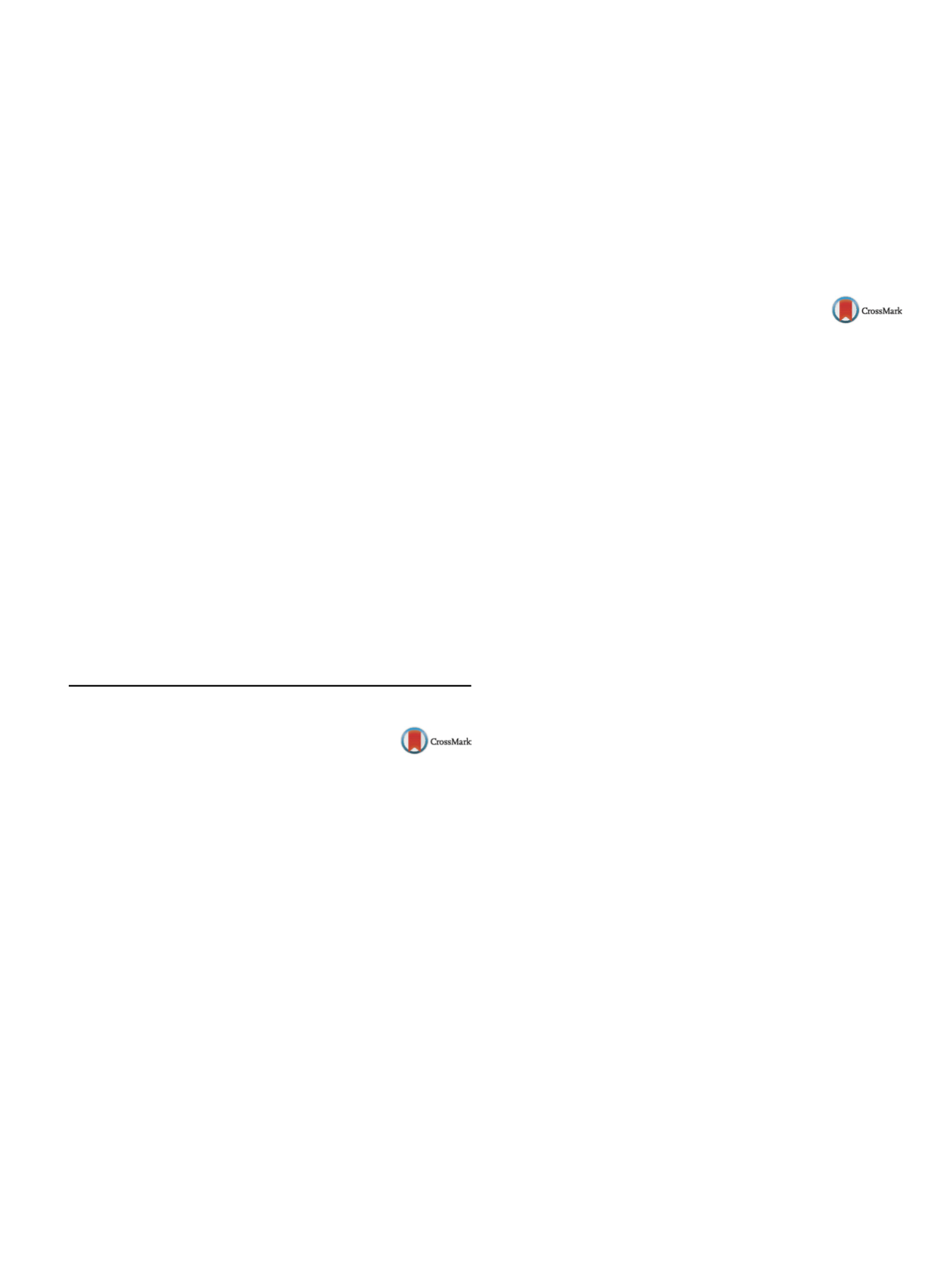

25th European Congress of Psychiatry / European Psychiatry 41S (2017) S847–S910
S853
Aim
In this study, the level of self-esteemand CT in patients diag-
nosed with SD vs. controls are aimed to be compared. In addition,
relationship between complaints of SD self-esteem and CT variable
subgroups are planned to be investigated.
Method
Twenty-four patients visited Prof. Dr. Mazhar Osman
Psychiatric Hospital with matching defined criteria and 24 control
counterparts statistically matching were taken sociodemographic
data form, Rosenberg Self-esteem Scale (RSS) and Childhood
Trauma Questionnaire (CTQ-28) was applied.
Results
CTQ-28 averages and RSS variables which are sensitivity
to criticism, depressive mood, psychosomatic symptoms, feeling
threatened in interpersonal relationships, degree to participate in
discussions, relationship with father were higher in patients with
SD (
P
< 0.05). Considering the relationship between complaints of
SD and CTQ-28 subscales, physical abuse, emotional abuse, physi-
cal neglect, emotional neglect averages of patients were observed
significantly different rooted by genitopelvic pain/penetration dis-
order and premature ejaculation and in emotional neglect by
premature ejaculation and low libido combination (
P
< 0.05).
Conclusions
In literature, there are many studies that show CT
leads to SD and several studies state that self-esteem is affected in
patients with SD
[1] . CT must be considered and determined in the
goal of treatment of SD.
Disclosure of interest
The authors have not supplied their decla-
ration of competing interest.
Reference
[1] Reissing ED, Binik YM, Khalife S Ve Ark. Etiological correlates
of vaginismus: sexual and physical abuse, sexual knowledge,
sexual self-schema, and relationship adjustment. J Sex Marital
Ther 2003;29:47–59.
http://dx.doi.org/10.1016/j.eurpsy.2017.01.1694e-Poster viewing: Sleep disorders and stress
EV1365
Evaluation of depression and anxiety,
and their relationship with insomnia,
nightmare and demographic variables
in medical students
S.A. Haji Seyed Javadi
Qazvin University of Medical Sciences, Psychiatry, Qazvin, Iran
Introduction
Researches showed comorbidity of sleep disorders
and mental disorders.
Objectives and aims
The current study aimed to evaluate depres-
sion and anxiety and their relationship with insomnia, nightmare
and demographic variables in the medical students of Qazvin Uni-
versity of Medical Sciences in 2015.
Method
The study population included 253 medical students
with the age range of 18–35 years. Data were gathered using Beck
depression inventory, Kettle anxiety, and insomnia and nightmare
questionnaires and were analyzed by proper statistical methods.
Results
Among the participants, 126 (49.6%) subjects had depres-
sion and 108 (42.5%) anxiety. The prevalence of depression and
anxiety among the subjects with lower family income was signif-
icantly higher (Chi
2
= 6.75,
P
= 0.03 for depression and
Х
2
= 27.99,
P
< 0.05 for anxiety). There was a close relationship between
depression with sleep-onset difficulty, difficulty in awakening and
daily sleep attacks, and also between anxiety with sleep-onset
difficulty and daily tiredness (
P
< 0.05). In addition, there was a
close relationshipbetweendepression and anxietywithnightmare;
16.2% of the subjects with depression and 26.5% of the ones with
anxiety experienced nightmares.
Conclusion
Results showed a relationship between nightmare,
insomnia and level of family income with increasing depression
and anxiety in the medical students; hence, due to the importance
of medicine in human life, it is necessary to evaluate the mental
health of medical students, identify and solve the relative prob-
lems such as anxiety, depression and related symptoms such as
insomnia and nightmare in them.
Disclosure of interest
The author has not supplied his/her decla-
ration of competing interest.
http://dx.doi.org/10.1016/j.eurpsy.2017.01.1695EV1366
Insomnia and sleep state
misperception: Clinical features,
diagnosis, management and
implications
J. Isaac
1 ,∗
, C. Santos
2, A. Matos Pires
21
ULSBA, Psychiatry and Mental Health Department, Beja, Portugal
2
Unidade Local de Saúde do Baixo Alentejo, Hospital de Beja,
Psychiatry, Beja, Portugal
∗
Corresponding author.
Background
Insomnia is a highly prevalent complaint, largely
associated with mental disease. Clinical evidence classifies insom-
nia in 2 subtypes: with sleep misperception (WSM) and without
sleep misperception (wSM). That presents distinctive pathophysi-
ologic pathways and different public health implications.
Objectives
Describe the main differences between primary
insomnia WSM and wSM regarding:
– clinical features;
– diagnosis;
– management;
– implications.
Methods
We conducted a systematic review. PubMed, Embase
and PsycInfo were searched from 2000–2016. The reference lists of
systematic reviews, narrative synthesis and some important arti-
cles were included. Following the inclusion criteria, we selected 25
studies from 59 articles.
Results
The prevalence of sleep-state misperception in primary
insomniacs (total sleep time > 6.5 h and sleep efficiency > 85%) is
around 26%. Insomniacs with normal sleep duration showed a pro-
file of high depression and anxiety and low ego strength, whereas
insomniacs with short sleep duration showed a profile of a medical
disorder.
Cortical hyperarousal is higher in insomniacs and could be related
to an alteration in sleep protection mechanisms. The sleep archi-
tecture was relatively normal for the WSM comparing with the
group wSM. Risk of cardiometabolic, neurocognitive morbidity and
mortality, and responses to treatment are different between these
two insomnia phenotypes. Patients with short sleep duration may
respond better to biological treatments, whereas insomnia with
normal sleep duration may respond primarily to psychological
therapies.
Conclusions
The clinical characteristics of patients with sleep-
state misperception differed from those without this condition.
Available research related to these conditions is expanding rapidly,
but many questions remain unanswered.
Disclosure of interest
The authors have not supplied their decla-
ration of competing interest.
http://dx.doi.org/10.1016/j.eurpsy.2017.01.1696

















